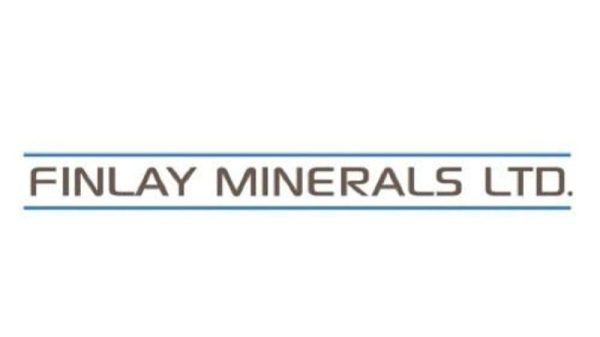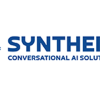In today’s rapidly evolving digital landscape, the concept of edge computing has emerged as a critical technology that promises to revolutionize the way data is processed and analyzed.
At its core, edge computing involves bringing computing power closer to where data is generated and used, rather than relying solely on centralized data centers. This distributed approach to computing offers several advantages, such as faster response times, improved data processing efficiency and reduced network congestion.
According to Markets and Markets, the size of the global edge computing market will reach US$53.6 billion in 2024 and grow to US$111.3 billion by 2028, achieving a compound annual growth rate of 15 percent.
As reliance on digital technologies grows, edge computing is becoming more important. Its ability to enable faster, more efficient and more responsive data processing makes it vital for meeting the demands of the modern digital world.
Edge computing vs. cloud computing
Edge computing and cloud computing are two vital components of modern computing architecture.
Edge computing focuses on data collection and initial processing at the source of data generation, while cloud computing provides centralized storage and analysis in a data center. These two technologies work together to provide efficient data processing and analysis, with edge computing allowing for low latency and offline capabilities, and cloud computing offering scalability and centralized management.
What is edge computing used for?
Edge computing has a wide range of applications across various industries, from optimizing asset management for companies to improving personal experiences. For business, edge computing enables real-time data processing and analysis, which can help streamline the management of physical assets. This can lead to improved efficiency, reduced downtime and increased productivity. It has useful applications in healthcare, manufacturing, transportation, energy distribution and management and retail.
On a personal level, edge computing can enhance the performance of mobile devices like GPS trackers. By processing data at the device level, edge computing can improve location accuracy and provide real-time tracking without the need for constant communication with a centralized server. Edge capabilities can be implemented in a variety of devices, such as sensors, routers and cameras, making it a flexible and adaptable solution that can be integrated into various network infrastructures.
Edge computing also presents new possibilities for human-machine interactions. Self-driving cars are a well-known application of edge computing, which is used to process and analyze data from sensors and cameras in real time so the cars can make quick decisions about navigation, obstacle avoidance and traffic conditions; of course, self-driving cars still require human oversight.
Aside from that, edge computing is built into dozens of consumer electronics, such as virtual assistants, smart TVs and gaming consoles, enabling these devices to provide more responsive and personalized experiences. Autonomous devices like robots and drones employ edge computing to accomplish tasks such as delivery, agricultural mapping and surveying, surveillance and security, inspection and warehouse operations.
Why is edge computing important for 5G?
The rollout of 5G networks is driving the need for more powerful edge computing solutions that can handle the high bandwidth and low latency requirements of 5G applications.
5G and edge computing both operate via distributed architecture, meaning that data-processing capabilities are spread across a wide network. 5G’s low-latency and high-bandwidth design combined with its higher connection density make edge devices optimized for 5G networks more responsive, efficient and reliable, even in challenging environments.
Both 5G and edge computing are key enablers of the Internet of Things (IoT), or the interconnection of physical devices and the internet. Examples include wearable devices, such as fitness trackers and smartwatches with health-monitoring capabilities, as well as smart home and city devices like thermostats and smart traffic lights.
Content delivery networks (CDNs) also play a role in edge computing, particularly in the context of 5G networks. A CDN is a network containing servers distributed across multiple locations that can work together to deliver internet content more efficiently. Essentially, CDNs complement the distributed nature of 5G and edge computing by dispersing content across a network of geographically disbanded servers. They work by caching internet content at the edge of the network, closer to end users, to reduce latency and improve the delivery of content. In the context of 5G and edge computing, CDNs can play a vital role in improving the performance and efficiency of content delivery in IoT applications. Akamai (NASDAQ:AKAM) and Cloudflare (NYSE:NET) are two of the most well-known CDNs.
What companies are leading in edge computing?
Edge computing is a growing field, and many companies are actively developing innovative solutions in this area. According to International Data Corporation, enterprise and service provider spending on edge solutions is forecast to reach nearly US$317 billion by 2026. Key players in edge computing include tech giants Amazon (NASDAQ:AMZN), Microsoft (NASDAQ:MSFT) and Alphabet (NASDAQ:GOOGL), Google’s parent company.
They all offer cloud computing services that support edge computing, providing the necessary infrastructure for data processing at the edge of the network. For example, Amazon Web Services (AWS) provides edge computing through AWS Outposts, a service that allows Amazon business customers to run AWS computing and streaming services in their own data centers or at edge locations.
In addition to providing cloud computing services, many companies are developing hardware and software solutions that enable edge computing. These include IoT devices, gateways and analytics tools.
NVIDIA (NASDAQ:NVDA), a well-known semiconductor company, is widely recognized as one of the leaders in developing hardware and software solutions for edge computing through its partnerships with other technology companies and its involvement in industry initiatives to drive innovation in edge computing.
IBM (NYSE:IBM) is another significant player in edge computing, offering a comprehensive catalogue of hardware and software solutions for edge and 5G computing. The company’s Edge Computing Solutions portfolio includes a range of products and services, from edge servers and storage systems to software and analytics tools that help organizations manage and optimize their edge computing infrastructure. Similarly, Dell (NYSE:DELL) offers a range of edge computing solutions, such as its Edge Gateway series and Apex edge computing platform.
Major telecommunications providers like AT&T (NYSE:T) and Verizon (NYSE:VZ) have also developed their own edge computing platforms. AT&T’s edge computing platform is optimized to support edge devices like autonomous vehicles and smart cities, plus augmented and virtual reality applications.
Verizon’s 5G Edge platform’s two resources support private and public mobile edge computing, allowing developers to create and deploy edge applications on Verizon’s private or public 5G networks.
Investor takeaway
Edge computing is becoming increasingly important as the world’s reliance on digital technologies grows. The adoption of IoT devices, the rollout of 5G networks and the potential for future 6G networks may drive continued demand.
These trends make edge computing an exciting area to watch for anyone interested in technology and its future developments. As tech continues to evolve and more companies invest in edge computing solutions, it will be interesting to see how it shapes the digital landscape and enables new applications and innovations.
Securities Disclosure: I, Meagen Seatter, hold no direct investment interest in any company mentioned in this article.







































